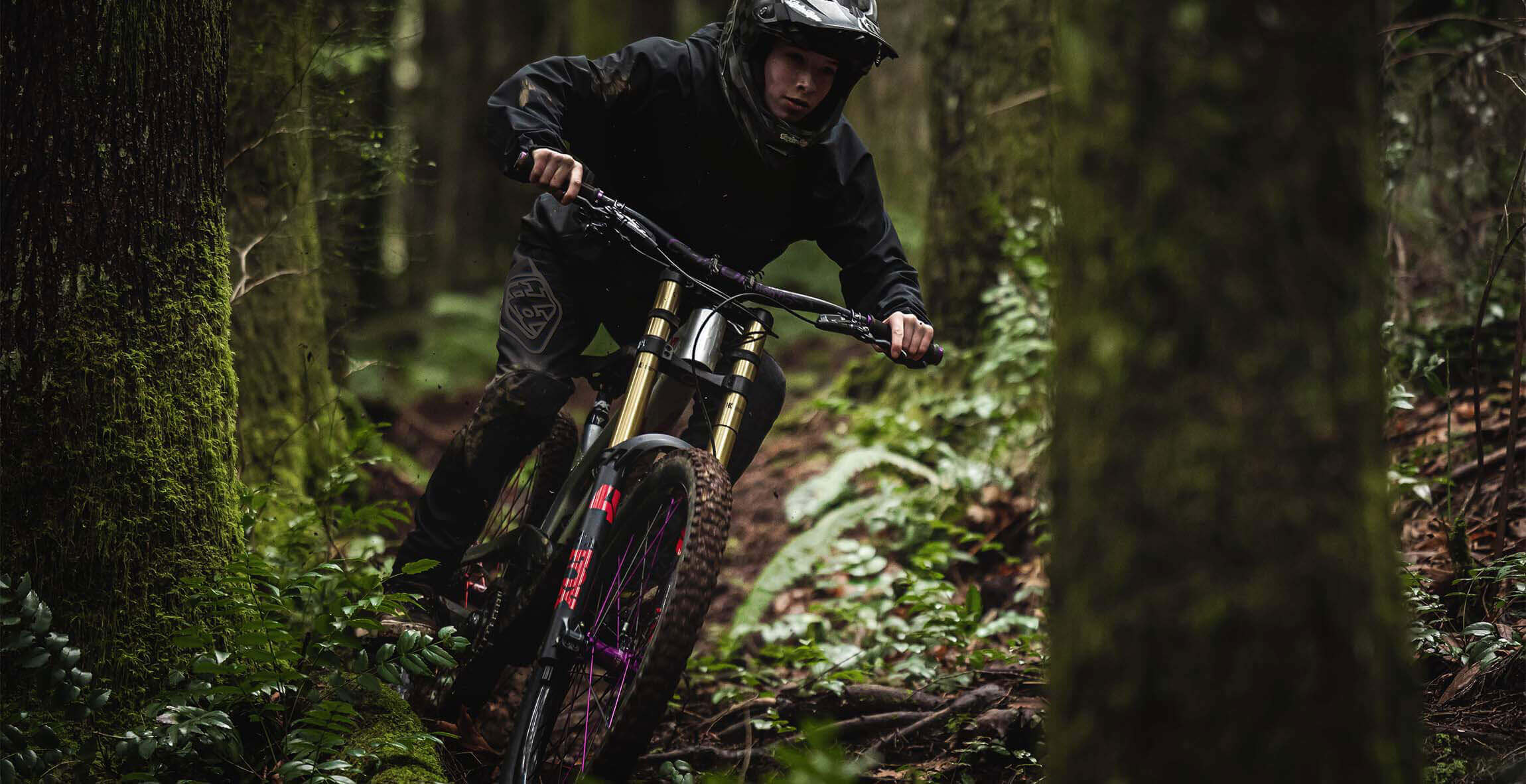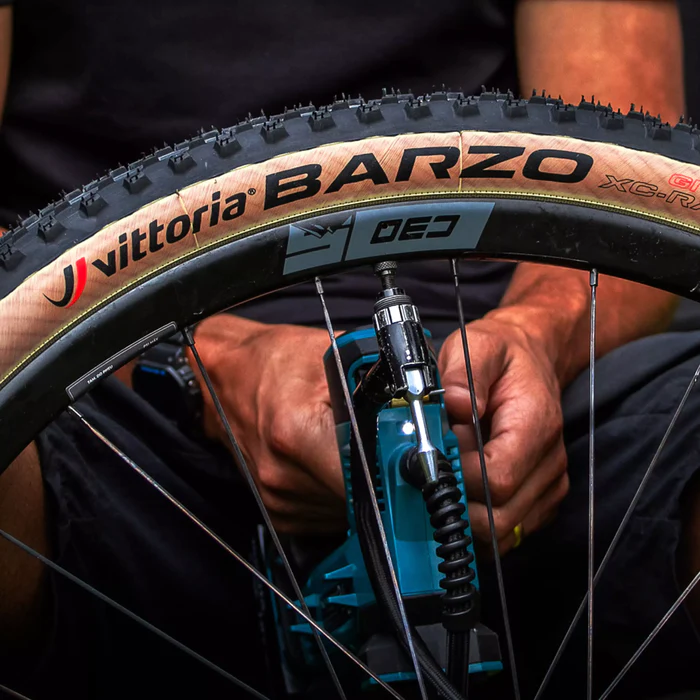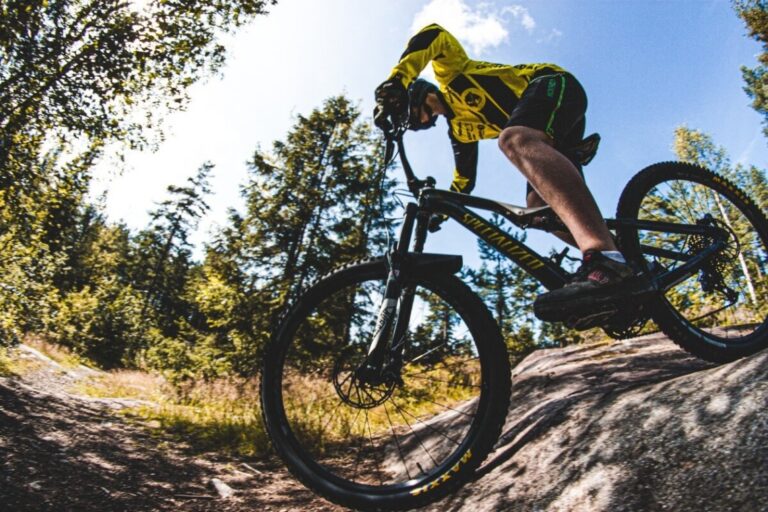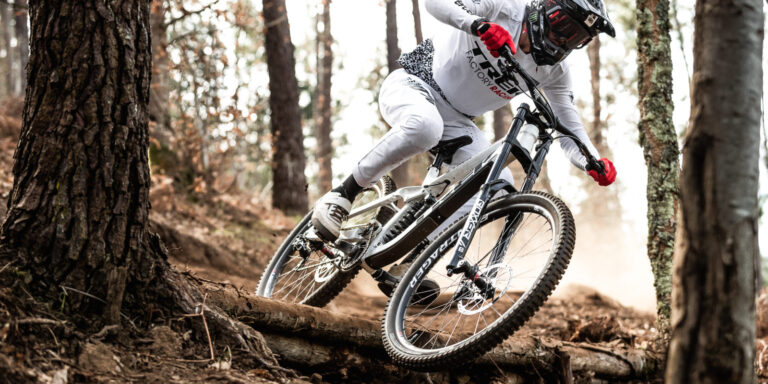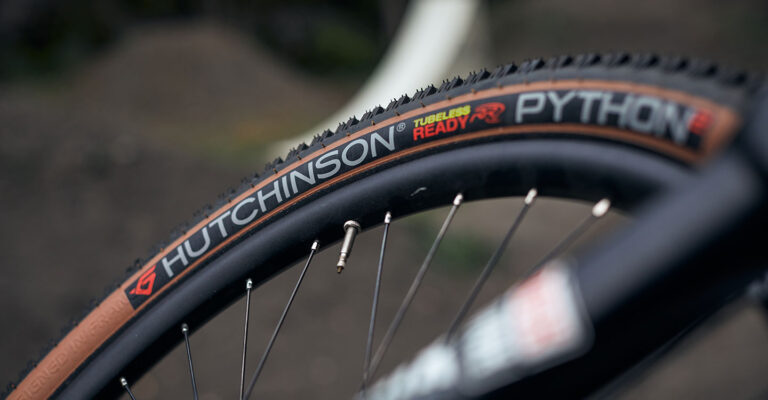Tire Width and Impact on Downhill Biking
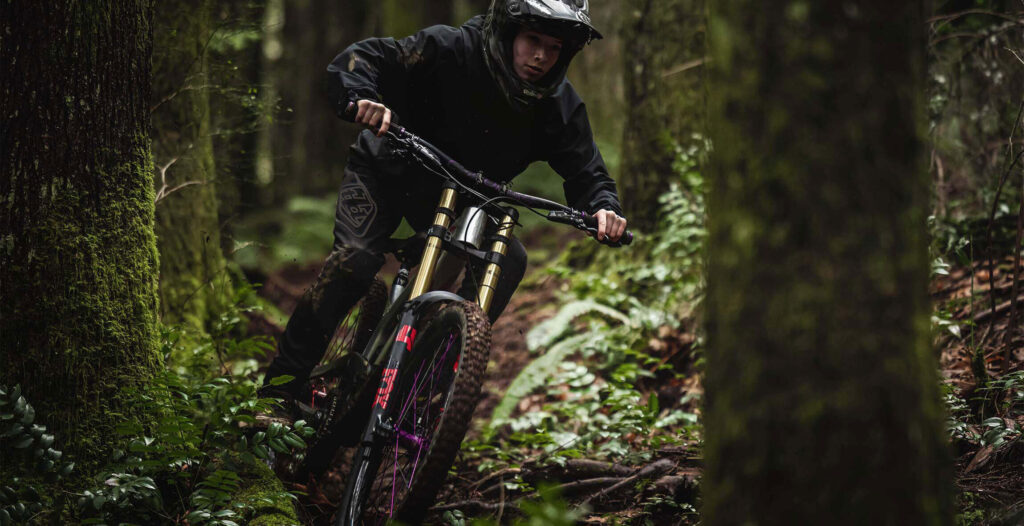
Key Point Summary of Tire Width and Impact on Downhill Biking:
- Tire Width Matters: Wider tires offer improved grip and stability.
- Control and Comfort: Increased tire width can improve shock absorption, contributing to superior control and comfort on rough terrains.
- Weight and Rolling Resistance: There’s a trade-off between the benefits of wider tires and increased weight and rolling resistance.
- Terrain Adaptability: The effectiveness of tire width is highly dependent on the terrain and conditions.
Downhill biking presents unique challenges and thrills, with the terrain often dictating the level of control and stability required. One crucial factor in meeting these demands is the choice of tire width. Through trial and error, as well as shared insights from fellow cyclists, I’ve gleaned valuable knowledge on how it affects downhill performance.
Tire Width and Impact on Downhill Biking: Basic Understanding
When it’s measured in inches or millimeters, significantly influences a bike’s handling characteristics. Wider tires, often ranging from 2.3 to 2.8 inches for downhill biking, provide a larger contact area with the ground, offering more grip and stability. This is particularly beneficial when navigating through loose gravel, wet conditions, or technical trails, where control is paramount.
The Role of Tire Width in Control and Comfort
A wider tire can handle more varied terrain by absorbing shocks and bumps more effectively, leading to a smoother ride. This shock absorption reduces the strain on the rider, allowing for longer rides with less fatigue. Moreover, the increased grip reduces the likelihood of slipping, enhancing rider confidence on steep descents.
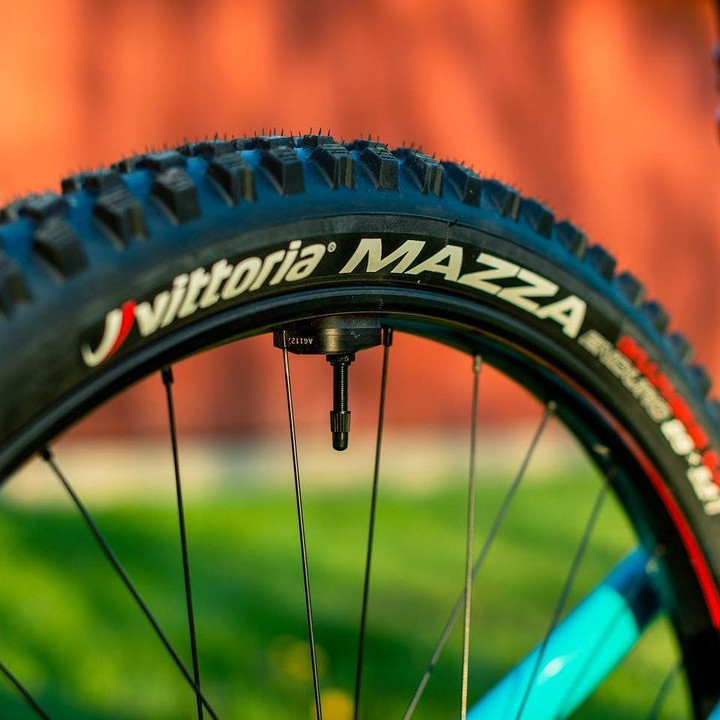
Considering Weight and Rolling Resistance
It’s essential to consider the trade-offs when selecting tire width. Wider tires, while offering better grip and comfort, also come with increased weight and rolling resistance. This can make pedaling more demanding and potentially slow you down on flatter sections or climbs. Balancing the benefits of wider tires with these drawbacks is crucial, depending on your specific biking needs and preferences.
Terrain Adaptability and Tire Width
The effectiveness also depends on the terrain. For soft or loose surfaces, wider tires can float more effectively, preventing the bike from sinking and losing momentum. However, on hardpacked trails, narrower tires might offer sufficient grip and better efficiency. Experimenting with different widths based on the typical terrain you encounter can help you find the perfect balance.
The Bottom Line
Tire width is a critical factor in downhill biking, affecting control, comfort, and overall performance. While wider tires offer numerous benefits in terms of grip and stability, it’s important to weigh these advantages against potential drawbacks like increased weight and rolling resistance. Ultimately, the best one is highly individual and depends on your riding style, the terrain you frequent, and personal preference. Experimentation and experience are key to finding your ideal setup and enhancing your biking experience.
For your downhill bike needs, both Continental and Vittoria offer compelling options. Here’s a summary of the insights gathered from the reviews:
Continental Mountain King
The Continental Mountain King is designed for trail and all-mountain riders. It’s known for its versatile performance, providing good grip and control across a variety of terrain, including wet conditions. The tire’s design aims to balance rolling resistance with traction, making it suitable for a range of trails.
It’s constructed with Continental’s BlackChili compound, which is engineered for durability and grip. The Protection layer adds puncture resistance, enhancing the tire’s durability for rugged trails. Reviewers appreciate its performance in muddy conditions and its ability to handle technical terrain.

Vittoria Mazza
The Vittoria Mazza is an aggressive all-around tire that’s well-liked for its solid performance across different conditions. The newer Enduro Race variant features a 1C Race rubber compound with graphene and silica additives, boosting grip and damping. It’s constructed with a reinforced Nylon casing for durability and puncture resistance.
The tire excels in offering traction and confidence, particularly in wet and dry off-camber sections. While it’s on the heavier side for a folding tire, it compensates with excellent traction and minimal wear even after extensive use on mixed terrain. The soft compound and deep siping allow the tire to conform and grip the trail effectively.

Vittoria Syerra
The Vittoria Syerra stands out as a fast-rolling tire on hardpack and firm surfaces, notable for its quiet operation and momentum preservation. It features a four-compound design with a dual compound center tread for rolling efficiency and a dual compound side tread for cornering grip.
The 60tpi casing and nylon layer provide puncture protection, while a rubber insert offers anti-pinch sidewall protection. Its moderate knob size and wide spacing ensure good mud shedding and versatile performance across different conditions. Reviewers compare its ride feel favorably with other market options, highlighting its supple ride and efficiency on climbs and in cornering.
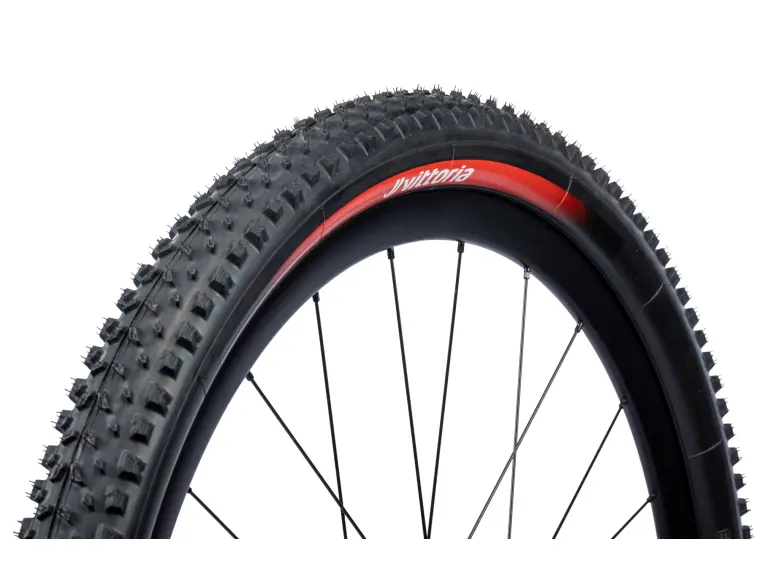
FAQ
How does tire width affect ride bike?
Wider tires can offer better traction, comfort, and stability by providing a larger contact patch with the ground. However, they may also increase rolling resistance and weight, which can affect acceleration and climbing efficiency.
What wheel size is best for downhill mountain biking?
The most common wheel size for downhill mountain biking is 27.5 inches (650b), offering a good balance of maneuverability, speed, and rolling over obstacles. Some riders prefer 29 inches for faster rolling over rough terrain, but 27.5 inches remains popular for its agility.
Do wider MTB tyres slow you down?
Wider MTB tires can potentially slow you down due to increased rolling resistance and weight. However, the added grip and stability might allow for faster cornering and more confident handling, which can translate to overall faster times on technical sections. The trade-off between speed and control depends on the terrain and riding style.
Happy Cycling!
John
